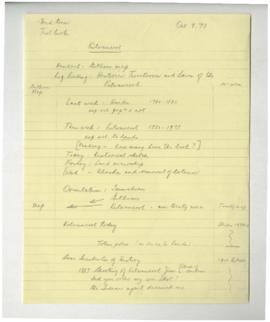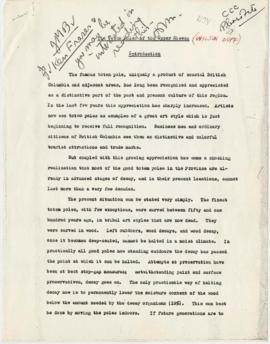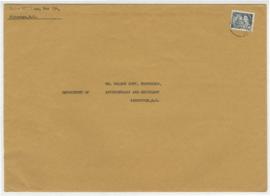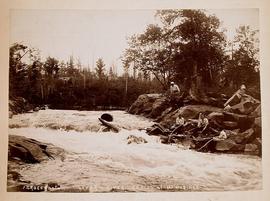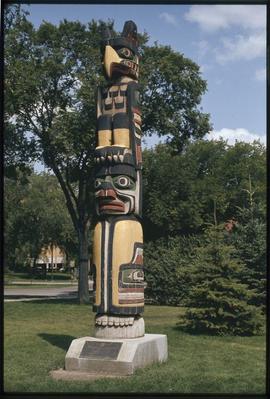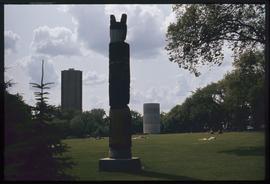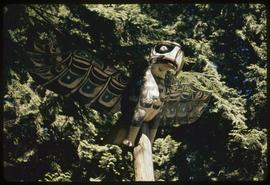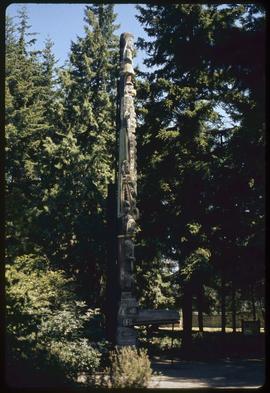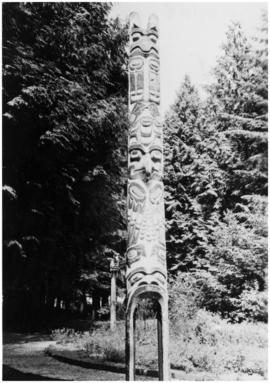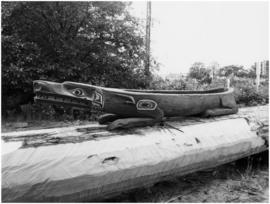Item is an audio recording made by Wilson Duff that features narrative and songs spoken and sung in several First Nations languages.
The first segment of the recording took place on August 1, 1962 in Fort Fraser at the home of Maxime George and the language used is Dakelh; accompanying documentation states that Mr. George was away but his sister Bernadette Grey was present along with Mrs. George and her sister.
The second segment of the recording took place on August 3, 1962 in Hagwilget at the house of Pete and Bernadette Grey and the language used is Dakelh; accompanying documentation states that the main singer is Donald Gray and his wife.
The third segment of the recording took place on August 16, 1962 featuring Johnson Williams, who has a Kitwancool name of Guano and the language used is Gitxsan.
The fourth segment of the recording took place on August 16, 1962 featuring Maxime George. The fifth portion of the recording is a Kitwancool recording. The final segment of the recording features Shuswap songs.
A two page document accompanied the recording. Document text:
Carrier
- Fort Fraser, Aug 1, 1962. W. Duff at home of Maxine George. He was away, but his daughter Bernadette Gray, her sister, and Mrs M George were present.
(1) Song. Same repeated
(2) Song (very short)
(3) Song
- Hagwilget, Aug 3 1962. At house of Pete and Bernadette Gray. Main singer old Donald Gray (94). His aged wife (104) also present.
(4) Song (Sun Song)
Not transcribed Song
Talk about names
(5) Song, then talk about languages
not transcribed Song
(6) Song, then talk of moon, explaining song
Song, then explained Sun is traveling in the sky. Talk about peacemaking forgets next song, talk about languages
(7) Song. Sung song, for making peace
Song. Long song, then explained. END
- Kispiox August 16, 1962. John Williams, who has Kitwancool name Guno. Gitksan.
(8) Tells Neegamks story in English, includes singing of Neegamks song
(9) Love song
(10) Song for welcoming guests
- Kispiox, same time as above. Jonathan Johnson sings his direge song
- Fort Fraser, August 16 1962. Maxine George, others as above, 1.
Lahal Song
- Song, break, then same song to end of tape
(reverse tape)
- Automobile song interpreted by Bernadette
Hudson Bay Rum song
Maxine George tells story of origin of mosquitoes in English
Then same in Carrier
Same, origin of fire, water, daylight in English
Hymn in Carrier, repeated
Another hymn
- Kitwancool recording, self explanatory
- Shuswap songs, self explanatory


